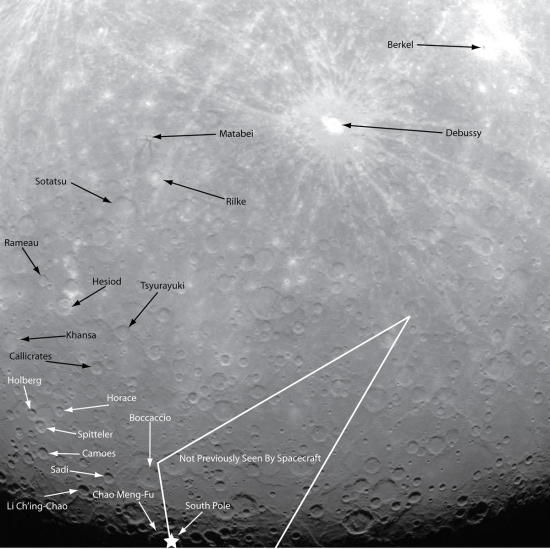NASA Faces Awkward, Unfortunate Spaceflight Gap
Reality bites: NASA faces awkward, unfortunate spaceflight gap.
Reality bites: NASA faces awkward, unfortunate spaceflight gap.
Reality bites: NASA faces awkward, unfortunate spaceflight gap.
Boeing moves forward on its commercial manned capsule.
A Soviet-era Vostok space capsule, flown prior to Gagarin as a test, has sold for $2.9M at a New York auction.
Stagnation haunts Russian space program.
ISS plans week-long simulated Mars mission.
This is the right idea, but to really learn something NASA needs to commit to a year-plus long simulated mission.
The future is here: Spaceship lands at San Francisco airport. And yes, that is an accurate headline!
Astronauts in ISS take cover as Chinese space junk flies past.
SpaceX unveils its plan for the Falcon 9 Heavy, what would be the world’s most powerful private rocket.
The new rocket will be able to carry about 117,000 pounds (53,000 kilograms) of cargo to orbit – about twice the payload-carrying capability of the space shuttle. The Falcon Heavy would launch more than twice as much weight as the Delta 4 heavy, currently the most powerful rocket in operation. Only NASA’s Saturn 5 moon rocket, which last launched in 1973, could carry more cargo to orbit, SpaceX officials said.
Musk said the rocket should lower the launch cost of cargo to about $1,000 per pound, about one-tenth the cost per pound on NASA shuttle launches.
Software engineers to the Moon!
Crazy? Absolutely! Impossible? Probably not! There are a growing number of people who believe that with federal funding for our space program getting scarce, the future lies in private-public partnerships. Entrepreneur Elon Musk’s third job (after leading electric car company Tesla and acting as the Chairman of solar installer SolarCity) is heading up SpaceX, which was the first private company to successfully launch, orbit and recover a rocketship. Virgin’s Richard Branson has a similar private space venture.
Three astronauts were launched to ISS today in a Soyuz capsule the Russians have named Gagarin, in honor of the fiftieth anniversary of his flight on April 12.
Russia’s launch capability continues to expand: Not only will they be able to launch rockets from French Guiana this year, it looks like Russia’s western spaceport will be ready for its first launch by 2015.
The Daily Beast reports today that the last flight of the shuttle Endeavour has been delayed due to a schedule conflict with a Russian Progress freighter.
Note that this has not yet been confirmed by NASA.
Update from spaceref: NASA has rescheduled Endeavour’s launch for April 29.
ATK is pushing hard for NASA commercial subsidizes to build a private version of Ares I.
The winners of the 18th annual Great Moonbuggy Race.
China’s second lunar orbiter, Chang’e 2: still in operation after 180 days.
Unfortunately, little of its scientific results have been released.
After seven years of work, the Soyuz launch site in French Guiana is finally ready for its first launch.
More on the storms hitting Endeavour launchpad today.
Shipwreck of 60-foot, single-masted sloop from 1830s found in Lake Michigan.
Hail storm hits Endeavour on launchpad.
Got $4.5 million? A new private commercial jet flew at 489 mph on a test flight March 11.

Above, an annotated version of the first orbital image, showing areas of the south pole never before seen.
From the press conference about the first Messenger images from Mercury orbit:
» Read more
Which near-Earth asteroids are ripe for a visit?
The first image from Mercury orbit.
The first test flight of a German electric-powered airplane.
The single-seat Elektra One is claimed to have a three-hour endurance using rechargeable batteries and a range of more than 216 nm. The aircraft has a payload of 220 pounds and is claimed to cruise at 86 knots.
The disassembly and decommissioning of the space shuttle Discovery has started.